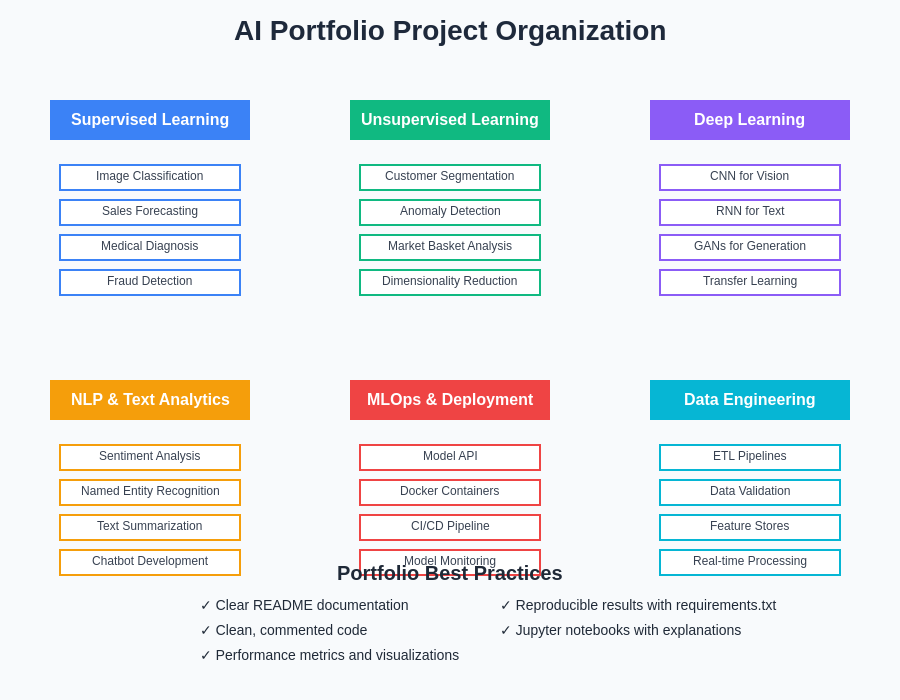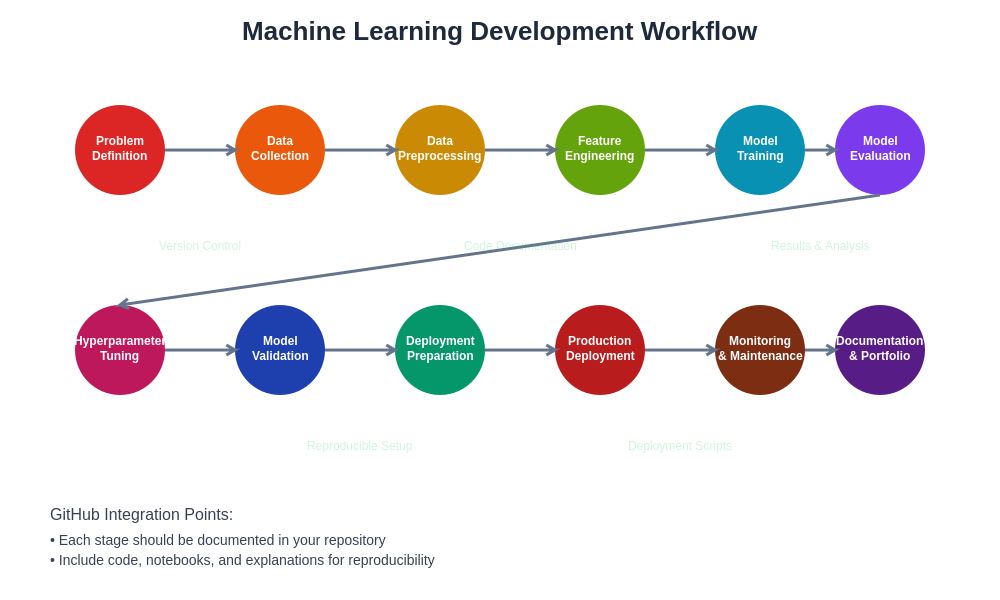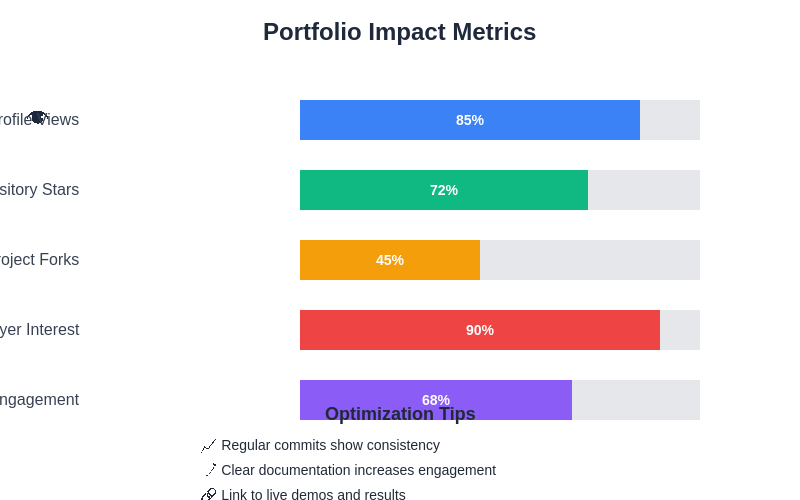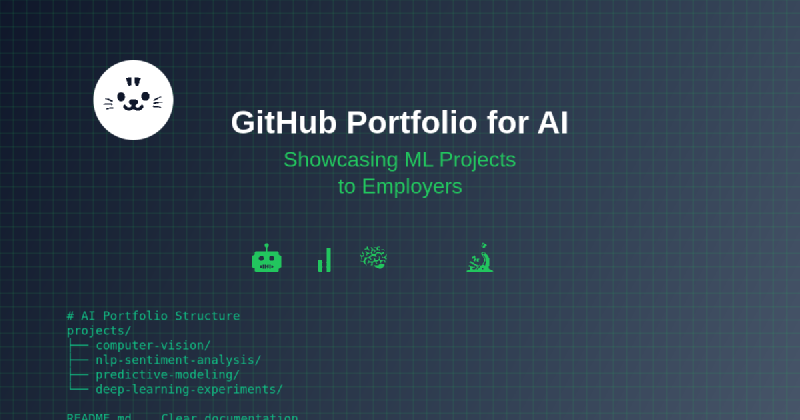The modern artificial intelligence landscape demands more than theoretical knowledge and academic credentials from aspiring data scientists and machine learning engineers. Today’s employers seek tangible evidence of practical skills, innovative thinking, and the ability to translate complex algorithms into real-world solutions. Your GitHub portfolio serves as the digital cornerstone of your professional identity in the AI field, offering potential employers an immediate glimpse into your technical capabilities, project management skills, and commitment to continuous learning in this rapidly evolving domain.
Creating a compelling GitHub portfolio for AI and machine learning projects requires strategic thinking that goes far beyond simply uploading code repositories. The most successful AI professionals understand that their GitHub presence functions as both a technical showcase and a narrative storytelling platform that demonstrates their journey from concept to implementation across diverse machine learning challenges. This comprehensive approach to portfolio development can significantly differentiate candidates in a competitive job market where technical proficiency must be balanced with clear communication and professional presentation skills.
Discover the latest trends in AI development to ensure your portfolio reflects current industry standards and emerging technologies that capture employer attention. The intersection of technical excellence and strategic presentation creates portfolios that not only demonstrate coding ability but also showcase the critical thinking and problem-solving skills that employers value most in AI and machine learning roles.
Strategic Foundation for AI Portfolio Architecture
Building an exceptional GitHub portfolio for AI requires careful consideration of both technical architecture and professional presentation. The most effective portfolios demonstrate a clear progression of skills while highlighting diverse applications of machine learning techniques across different domains and problem types. This strategic approach ensures that your portfolio tells a coherent story of growth and expertise rather than appearing as a random collection of unrelated projects.
The foundation of your AI portfolio should reflect a balance between breadth and depth, showcasing your ability to work across different aspects of the machine learning pipeline while demonstrating deep expertise in specific areas of interest. Employers seek candidates who can navigate the entire spectrum of AI development, from data preprocessing and exploratory analysis through model development, evaluation, and deployment. Your repository structure should make this comprehensive skill set immediately apparent to anyone reviewing your work.
Successful AI portfolios also incorporate clear documentation practices that allow non-technical stakeholders to understand the business value and practical applications of your projects. This dual-audience approach recognizes that hiring decisions often involve both technical team members and business leaders who need to understand how your skills translate into organizational value and competitive advantage.
Essential Project Categories for ML Portfolios
The most compelling AI portfolios strategically organize projects across several key categories that demonstrate versatility and depth in machine learning applications. Supervised learning projects should showcase your ability to work with both classification and regression problems, ideally across different domains such as healthcare, finance, marketing, or technology. These projects demonstrate your understanding of fundamental machine learning principles while highlighting your ability to adapt techniques to specific industry contexts and constraints.
Unsupervised learning projects provide opportunities to showcase your exploratory data analysis skills and ability to extract meaningful insights from unlabeled data. These projects often resonate strongly with employers because they demonstrate creativity and the ability to find valuable patterns without explicit guidance, skills that translate directly to real-world business intelligence and market research applications.
Deep learning projects have become increasingly important in modern AI portfolios, particularly for roles focused on computer vision, natural language processing, or complex pattern recognition tasks. However, these projects should be balanced with traditional machine learning approaches to demonstrate comprehensive understanding of when to apply different techniques based on problem requirements, data availability, and computational constraints.

The strategic organization of projects within your portfolio creates a narrative that guides potential employers through your learning journey and technical development. This structured approach ensures that your diverse skills are presented in a way that maximizes impact and demonstrates your ability to tackle increasingly complex challenges across different aspects of artificial intelligence and machine learning.
Crafting Compelling Project Documentation
Documentation quality often distinguishes exceptional AI portfolios from merely competent ones. The best technical projects combine sophisticated algorithms with clear, accessible explanations that allow readers to understand both the technical implementation and the business value of your work. This dual focus on technical depth and communication clarity demonstrates the well-rounded skill set that employers seek in senior AI roles.
Enhance your AI development workflow with Claude to generate comprehensive documentation, code explanations, and project descriptions that effectively communicate complex technical concepts to diverse audiences. The ability to translate technical complexity into accessible insights represents a critical skill for AI professionals working in collaborative environments where cross-functional communication drives project success.
Each project repository should include comprehensive README files that provide clear problem statements, methodology explanations, results summaries, and instructions for reproducing your work. This documentation serves multiple purposes: it demonstrates your ability to communicate complex ideas clearly, provides evidence of your systematic approach to problem-solving, and enables potential employers to quickly assess the scope and sophistication of your technical work.
The most effective project documentation also includes reflection on challenges encountered during development, decisions made regarding model selection and hyperparameter tuning, and discussions of potential improvements or alternative approaches. This level of thoughtful analysis demonstrates critical thinking skills and self-awareness that employers value highly in AI professionals who must navigate ambiguous problem spaces and make informed decisions under uncertainty.
Showcasing Data Science and Analytics Skills
Modern AI roles increasingly require strong data science foundations that extend beyond model development to include comprehensive data analysis, visualization, and insight generation capabilities. Your GitHub portfolio should demonstrate proficiency in exploratory data analysis, statistical inference, and data visualization techniques that support effective decision-making throughout the machine learning development lifecycle.
Data preprocessing and feature engineering projects provide excellent opportunities to showcase your understanding of data quality issues, domain expertise application, and creative problem-solving in preparing datasets for machine learning applications. These projects often involve more complex reasoning and domain knowledge application than the modeling phase itself, making them valuable demonstrations of real-world problem-solving capabilities.
Visualization and dashboard projects demonstrate your ability to communicate insights effectively to stakeholders and create user-friendly interfaces for model outputs and data analysis results. These projects are particularly valuable because they show your understanding of the full data science workflow from raw data collection through insight presentation and actionable recommendation development.
Highlighting MLOps and Production Capabilities
The growing emphasis on MLOps and production machine learning systems has made deployment and operational capabilities increasingly important for AI portfolio differentiation. Projects that demonstrate your ability to containerize models, create APIs, implement monitoring systems, and manage model versioning showcase the practical skills necessary for enterprise AI deployment and maintenance.
Cloud platform integration projects provide opportunities to demonstrate familiarity with modern AI infrastructure including AWS, Google Cloud Platform, and Azure machine learning services. These projects show potential employers that you understand the scalability, security, and cost considerations involved in production AI system development and can work effectively within enterprise technology constraints.
Continuous integration and continuous deployment pipelines for machine learning projects demonstrate software engineering best practices adapted for AI workflows. These projects are particularly valuable for roles that require collaboration with engineering teams and show your ability to integrate AI solutions into broader software development lifecycles and organizational processes.

The integration of MLOps practices into your portfolio projects demonstrates understanding of the complete machine learning lifecycle and positions you as a candidate capable of delivering production-ready solutions rather than just prototype demonstrations. This practical orientation increasingly distinguishes competitive candidates in the evolving AI job market.
Open Source Contributions and Community Engagement
Active participation in open source AI and machine learning projects provides powerful evidence of your ability to collaborate effectively, contribute to existing codebases, and engage with the broader AI community. These contributions demonstrate initiative, technical competence, and the communication skills necessary for successful collaboration in distributed development environments.
Contributing to popular machine learning libraries, creating useful tools for the AI community, or maintaining your own open source projects showcases leadership capabilities and deep technical understanding. These activities also provide networking opportunities and professional visibility that can lead to career opportunities through community connections and reputation building.
Leverage Perplexity for comprehensive research into current open source AI projects, emerging technologies, and community needs that align with your interests and career objectives. Strategic open source contributions can significantly enhance your professional reputation while providing valuable learning opportunities and industry connections.
Documentation contributions, tutorial creation, and educational content development for AI topics demonstrate your ability to explain complex concepts clearly and contribute to community knowledge sharing. These activities are particularly valuable for roles that involve mentoring, training, or customer-facing responsibilities where technical communication skills are essential.
Advanced Portfolio Optimization Strategies
The most sophisticated AI portfolios incorporate advanced strategies for maximizing visibility, accessibility, and professional impact. Repository naming conventions, topic tags, and README optimization techniques can significantly improve the discoverability of your projects through GitHub search and recommendation algorithms.
Performance benchmarking and comparative analysis across different approaches within your projects demonstrate rigorous evaluation methodologies and deep understanding of algorithm trade-offs. These analyses show potential employers that you can make informed decisions about model selection based on performance criteria, computational constraints, and business requirements.
Cross-project integration and portfolio-level documentation that explains your overall approach to AI problem-solving creates a cohesive narrative that distinguishes your portfolio from collections of disconnected projects. This strategic presentation helps employers understand your systematic approach to learning and professional development in the AI field.
Industry-Specific Portfolio Customization
Tailoring your GitHub portfolio to specific industry verticals or application domains can significantly enhance your appeal to targeted employers. Healthcare AI projects require different considerations regarding data privacy, regulatory compliance, and clinical validation compared to e-commerce recommendation systems or financial fraud detection applications.
Understanding and incorporating industry-specific best practices, evaluation metrics, and ethical considerations into your projects demonstrates domain expertise that can be more valuable than generic technical skills. This specialization approach allows you to position yourself as a subject matter expert rather than a generalist developer.
Collaboration with domain experts, incorporation of real-world constraints, and demonstration of regulatory awareness in relevant fields shows employers that you understand the practical challenges of implementing AI solutions in their specific business context.

Industry-focused portfolios that demonstrate understanding of sector-specific challenges, compliance requirements, and success metrics create competitive advantages in specialized markets where domain knowledge combines with technical expertise to drive business value.
Professional Presentation and Personal Branding
Your GitHub profile serves as your professional brand in the AI community, and strategic optimization of your profile README, contribution patterns, and project presentation can significantly impact employer perceptions. Consistent code quality, documentation standards, and project organization demonstrate attention to detail and professional standards that translate directly to workplace performance.
Professional headshots, clear bio statements, and links to additional professional materials create a cohesive online presence that supports your job search efforts. Many employers review multiple online platforms during candidate evaluation, making consistency across GitHub, LinkedIn, and personal websites important for professional credibility.
Activity patterns and contribution consistency demonstrate commitment to continuous learning and professional development. Regular contributions, even small ones, show employers that you maintain active engagement with AI technologies and stay current with evolving best practices and emerging techniques.
Measuring Portfolio Impact and Continuous Improvement
Successful AI professionals continuously evaluate and improve their GitHub portfolios based on feedback, job market changes, and evolving technology trends. Tracking metrics such as repository stars, forks, and community engagement provides insights into which projects resonate most strongly with your professional network and potential employers.
Regular portfolio audits should assess project relevance, documentation quality, and alignment with career objectives. Removing outdated projects, updating documentation, and adding new projects that reflect current skills and interests ensures that your portfolio remains an accurate representation of your current capabilities.
Seeking feedback from industry professionals, participating in portfolio review sessions, and analyzing successful portfolios from professionals in your target roles provides valuable insights for continuous improvement and strategic positioning in the competitive AI job market.
Future-Proofing Your AI Portfolio Strategy
The rapidly evolving nature of artificial intelligence and machine learning requires portfolio strategies that remain relevant across changing technology landscapes and employment trends. Building foundational projects that demonstrate core principles while staying current with emerging techniques ensures long-term portfolio value.
Keeping abreast of industry trends, emerging tools, and changing employer expectations allows you to proactively update your portfolio strategy before market shifts impact your competitive positioning. This forward-thinking approach to career development creates sustainable advantages in the dynamic AI job market.
The most successful AI professionals view their GitHub portfolios as living documents that evolve with their careers and the industry, requiring ongoing attention and strategic updates to maintain maximum professional impact and career advancement potential.
Disclaimer
This article is for informational purposes only and does not constitute professional career advice. The strategies discussed are based on current industry trends and best practices in AI portfolio development. Individual results may vary depending on specific career goals, technical background, and market conditions. Readers should adapt these recommendations to their unique circumstances and consult with career professionals when making significant career decisions.
